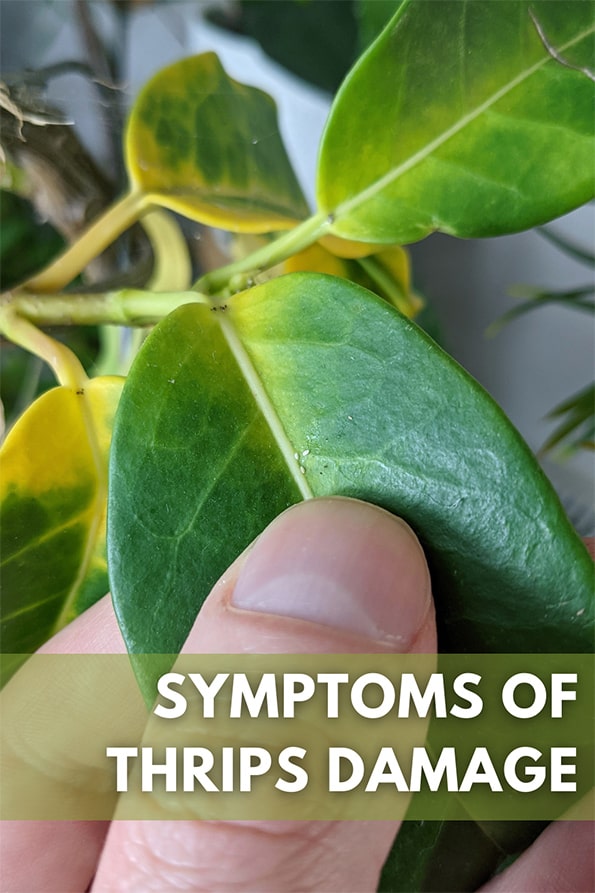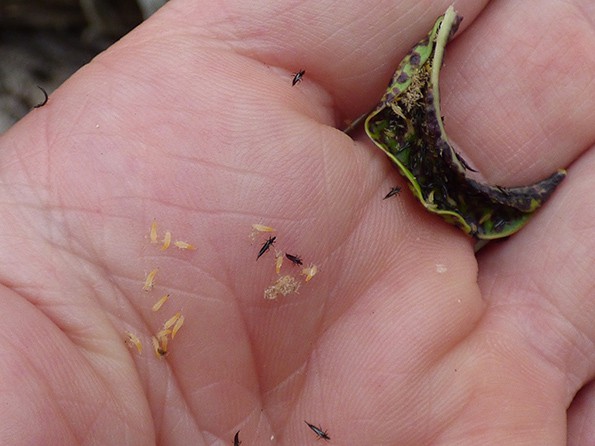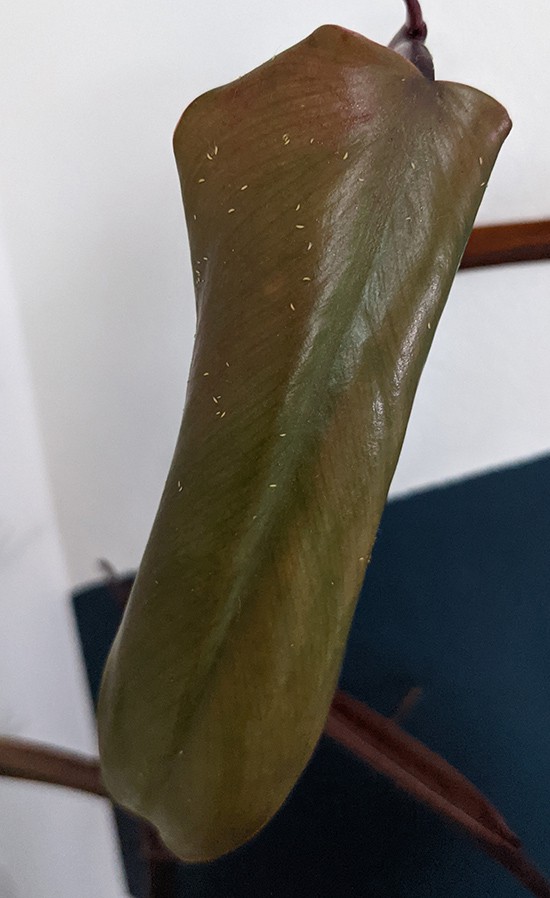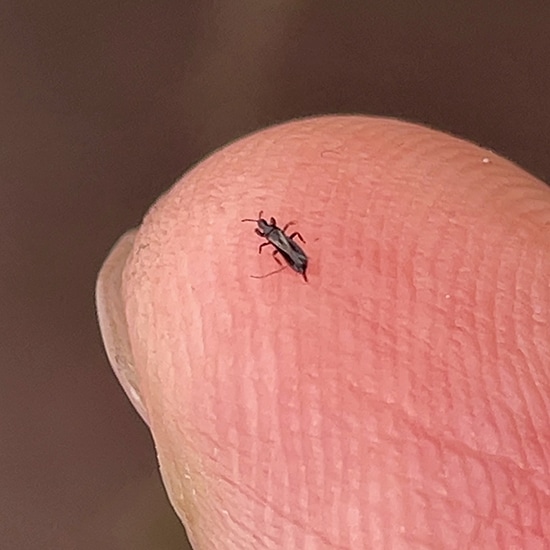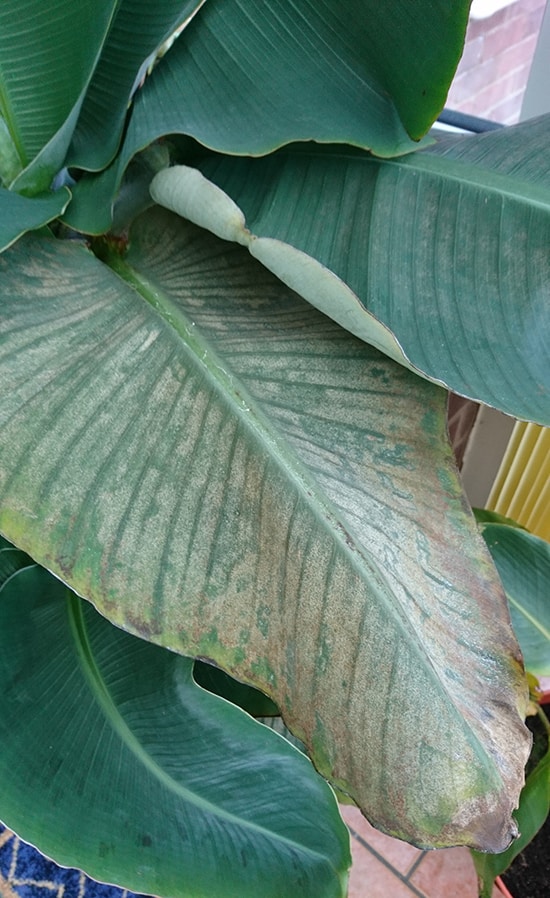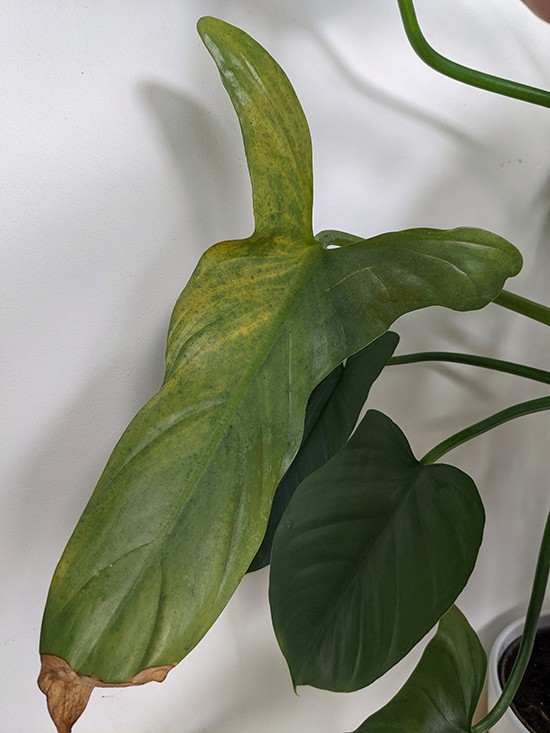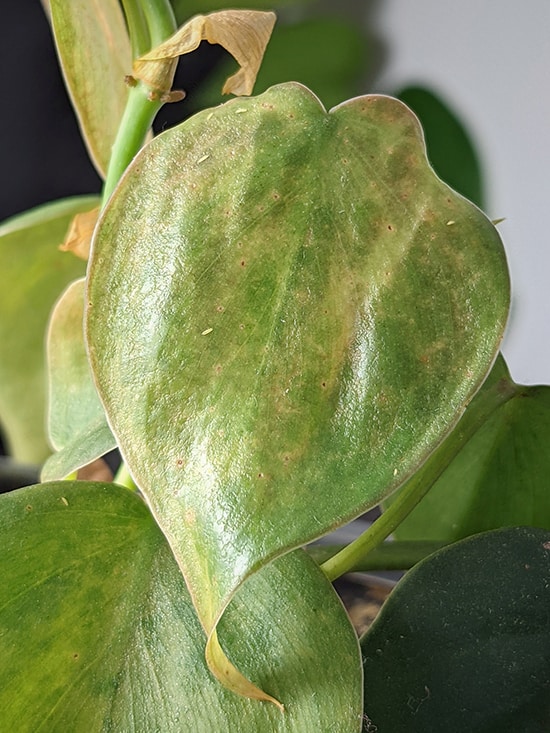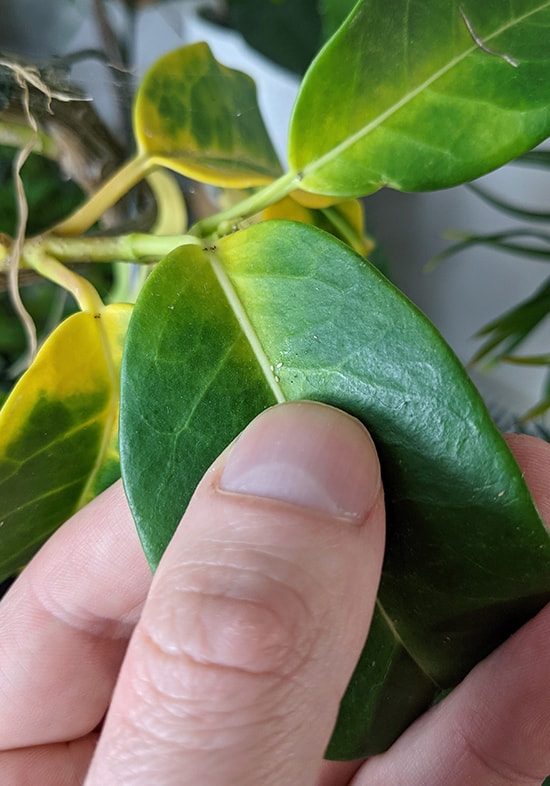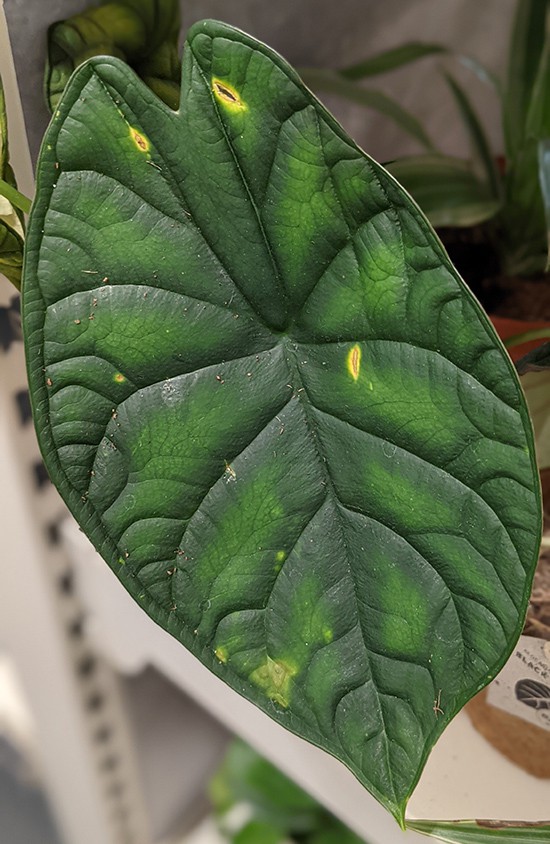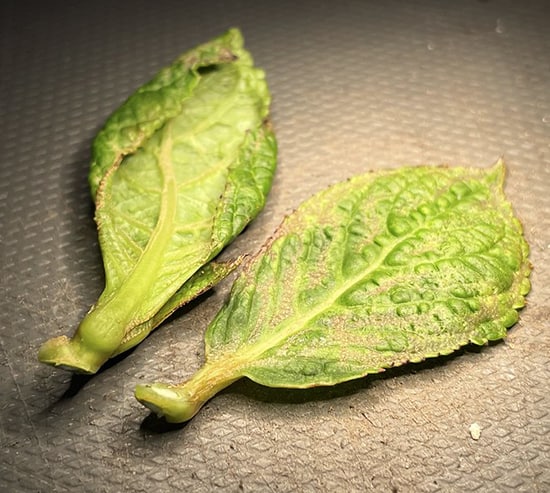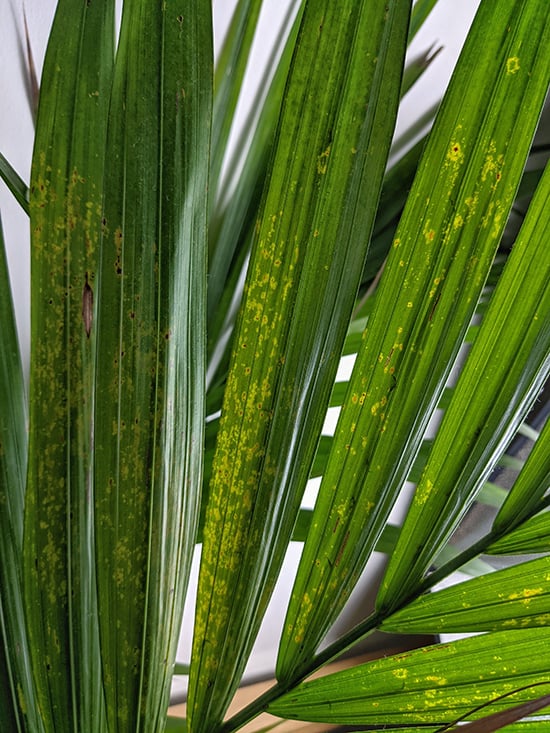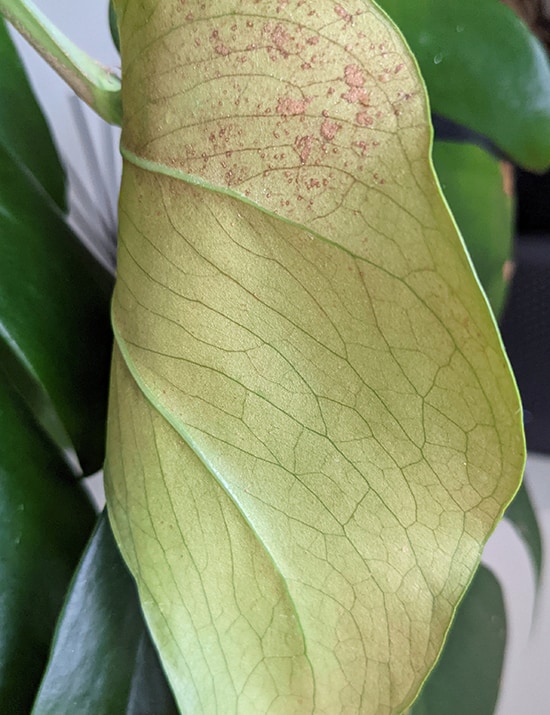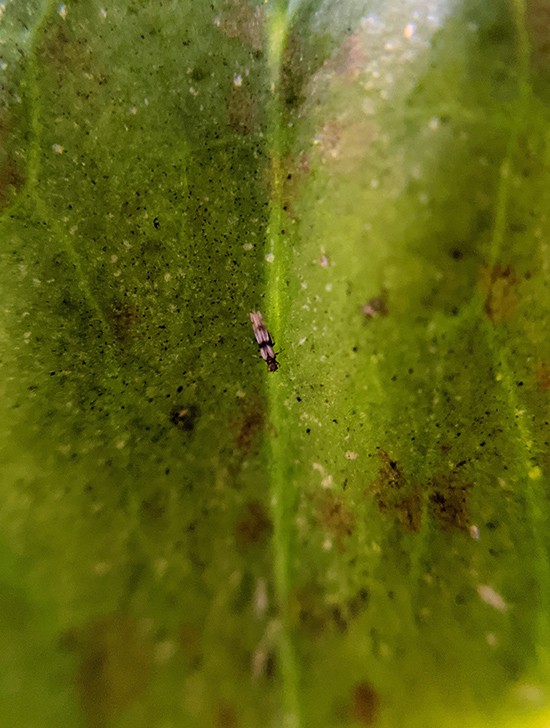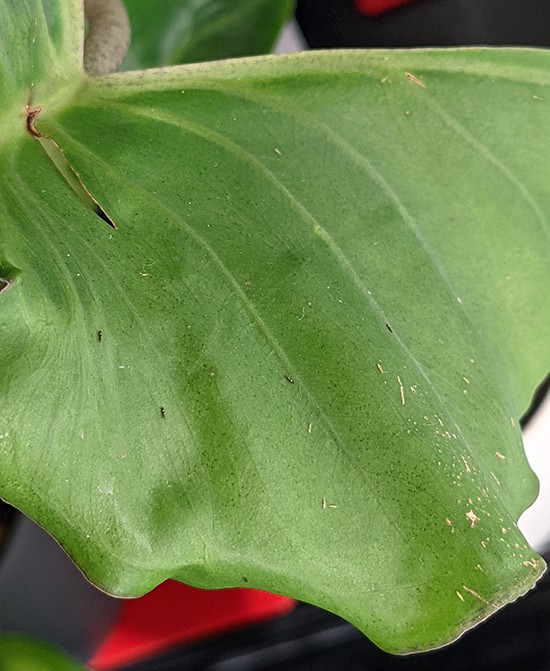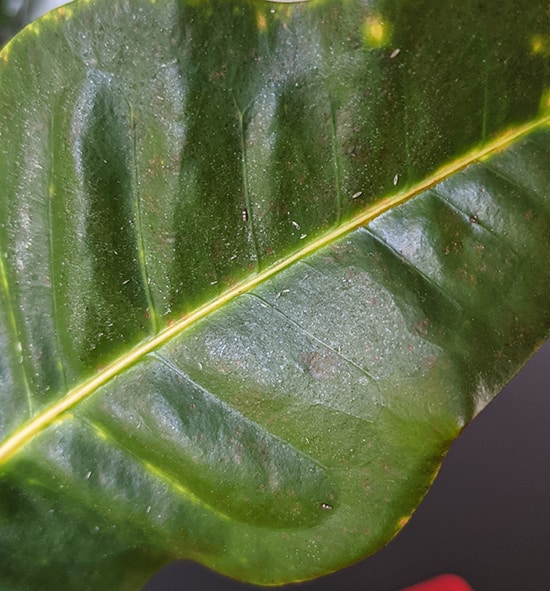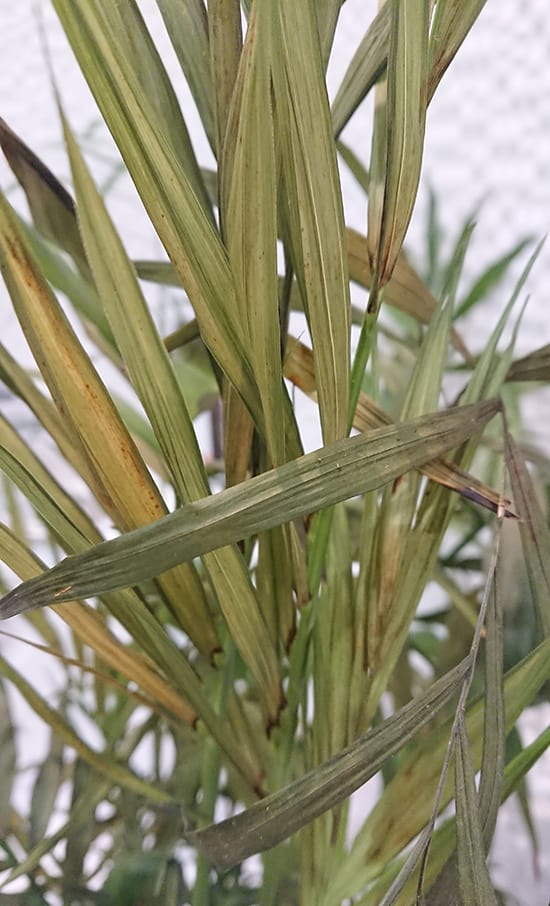Do you have a houseplant that looks ill and you're unsure if it's been caused by Thrips?
I've had my fair share of Thrip infestations. After growing hundreds of indoor plants over the years, I've quickly learned to spot the telltale signs of thrips damage.
This guide will show you what to look out for. I've included lots of photos to help you compare common thrip damage with what you're seeing on your own plants.
There are over 7,000 species of thrips that could feed and damage a wide variety of plant species. Around 150 of these will target houseplants.
Thrips will breed and lay eggs in the plant tissue on the host plant. They also feed off the sugars and sap within the leaves. All of this causes severe damage that will ruin the look of your indoor plants.
You need to deal with this common pest fast. If you don't, they'll ravage your plant and transfer to other houseplants in your collection. It's important to spot the signs of Thrips and this guide will help you do this.

Hi, I'm Tom!
If you're like me and enjoy the challenge of growing houseplants and getting them to thrive, then Ourhouseplants can help. This website shares my knowledge and years of growing plants and provides (hopefully) helpful advice on properly caring for your indoor plant friends.
Thrips are a common pest for both indoor and outdoor plants. They've been studied extensively over the years so we know a lot about them.
Different life stages - Photo by Forest & Kim Starr
The Life cycle Diagram
If you're interested in seeing the life cycle of Thrips here is a helpful drawing.
Generally, Thrips have six distinct life stages. Some species will live longer than others but normally, their lifespan is temperature dependent. The warmer it is the faster they grow. This is why Thrips are usually a bigger problem over Summer and less of a worry in Winter.
For example, western flower thrips (frankliniella occidentalis) live around 44 days when the temperature is 59°F (15°C) and only 15 days when it's 86°F (30°C).
Stage 1 - Egg
Adult females will lay their white or yellow eggs, often kidney-shaped and no larger than a comma in a sentence. She will usually place them directly on leaves, in flower buds, or even within the leaf tissue itself.
Stage 2 - 1st Instar Larva
The egg hatches a few days after being laid. What emerges is known as the 1st Instar Larva. It will feed on the plant or the potting mix surface depending where the female laid it. This stage often lasts for two or three days.
Stage 3 - 2nd Instar Larva
This stage involves the insect getting longer and it becomes more mobile. It will typically be found on the leaf surface feeding off the plant and they can be seen fairly easily with the naked eye if you're looking for them.
The development stage takes around 10 days to complete. However, it happens faster when temperatures are warmer.
Although tiny insects they can still be seen with the naked eye. They're more obvious when they contrast with the leaf color or gather in groups like this.
Stage 4 - Prepupa
The insect typically falls from the plant and lands in the potting mix. It's not very active and this point and stays like this for a few days.
Stage 5 - Pupa
Hiding in the leaf litter in the potting mix, the insect starts changing into an adult. This pupal stage lasts for about five days, again it can be faster in warmer temperatures.
Stage 6 - Adult
The pupa breaks open and the Thrip emerges. They're small, slim insects, with narrow wings. There are many different species with different looks, but black or brown is perhaps most common with houseplants. They have wings that are folded back along the body and longish antennae.
They get back onto the plant either by flying or crawling. These insects are much less airborne than Fungus Gnats and usually won't bother you. They don't typically leave the plant unless seeking a new home or a mate.
Thrips are small insects that don't do much damage by themselves. But dry conditions and warm weather will encourage Thrip populations to expand quickly. Photo by Kyu3
Adult females can live for several months in the right conditions and if the room temperature is cooler. Although in warmer temperature and natural habitats their lifespan is much shorter.
Unfortunately, this is a considerable period for the insects to mate and lay multiple eggs. All of which are at different points in their life cycle, so once a plant has a Thrips problem it isn't easy to get rid of them all with one treatment.
Thrips can be difficult to detect due to their size and because they often hide in the leaf litter or on the undersides of leaves. Spotting the damage they're causing to your plant is often a more reliable way to alert you to their presence.
Here's what to look for.
1
Thrips feed on plant cells with unusually shaped mouthparts. However they're unable to pierce deep into the plant tissue like Aphids do. Instead they damage the plant surface by rubbing it or biting it until sap oozes to the surface.
Some species will inject digestive enzymes into the wound. Over time, this leaves behind a silvery or bronzed color on the leaf's surface. This damage is often more noticeable on darker green foliage and can be extensive.
Feeding damage on a Musa Banana leaf with the resulting silver-grey patches.
2
Thrips will bite and pierce the plant cells near the surface of the leaf and extract the contents. This causes small, light-colored dots or speckles on the leaves.
This Philodendron leaf may look like it has general yellowing all over. But it's actually caused by hundreds and thousands of microscopic bite marks.
This stippling effect can sometimes be inconsistent. This can then give the leaves a mottled appearance.
Immature thrips cause serious feeding damage on a Heartleaf Philodendron.
3
When some plants sense that the thrip damage to their leaves is significant, they choose to discard it. This involves pulling out the remaining nutrients which changes the leaf color yellow.
Premature drying, and shedding of leaves is common with heavy infestations.
Yellowing on plant leaves can be caused by lots of things from underfeeding to overwateirng. However, here you can see three immature thrips which are the likely cause.
The insects can also weaken plants and create areas for plant viruses to invade. The yellowing can also be more localised as some plants try to isolate the damage rather than discard the entire leaf.
Sometimes the cause of the yellowing on leaves can be hard to establish. If you see this look for the presence of Thrips on the leaf surface and on the undersides of leaves.
4
Feeding can lead to the distortion or curling of leaves. Their mouthparts are asymmetrical and this causes the injury to be blunt and random. On some plants this will show up as leaves growing incorrectly with twists or raised bumps.
These leaves should be flat, instead they're curling and have raised areas. Photo by Matt Borden
Although Thrips will often feed exclusively on plant sap, they can be attracted to flower petals due to the possibility of protein rich pollen.
This is going to be more common with garden plants but flowering houseplants may also have distortion around the flowers.
5
Some plants will choose to keep their leaves after the Thrips are gone. Either because they've deemed it not serious enough or the leaf is too valuable to replace at this time. When this happens it's common for scars to form where the plant has attempted to heal the damage.
Although it has now been cleared, a previous serious infestation of Thrips on this Areca palm bares the wounds and scars of the encounter.
The scarring can be of a different texture or color than the rest of the leaf; it may also be raised and create bumps.
Damage may result in scars on leaves. These will remain for as long as the plant keeps the leaf, as shown on the underside of this Monstera deliciosa.
6
The existence of black mold on leaves could signal a potential thrip infestation. This occurs from a combination of plant damage and thrip activity.
The plant sustains damage, releasing plant juices, some of which may remain unconsumed by the insects. Additionally, thrips produce a sticky substance known as honeydew, contributing to the formation of black mold on the affected leaves.
Sooty mold is a fungal disease that grows on plants and other surfaces covered by honeydew.
7
Some Thrips species leave shiny or metallic-looking deposits on plant surfaces as they feed.
Small black specks of excrement may also be seen either on the leaf surface or on the surface surrounding the planter below. If you want to test what you're looking at. The excrement will initially stick to the leaf surface, but it can be dislodged easily with a light touch (wash your hands after!).
This Alocasia leaf has small black spots, scarring and adult thrips present.
Sometimes you'll get a combination of plant debris, the leftovers from the pupal stages and honeydew. This can make the leaf surface look messy and it may also have a reflective, almost shiny appearance.
They'll often produce substantial quantities of a varnish-like excrement that collects on leaves, creating an unsightly and slightly reflective appearance.
The important thing is not to overreact.
Thrips can be scary but they can be treated and got rid of. You don't need to throw your houseplants in the trash as soon as you see some suspected Thrip damage.
Did you Know?
Thrips are often given common names based on the plants they prefer to live on. Gladiolus thrips, Melon thrips, Onion Thrips and even Chilli thrips, are just a couple of examples.
The second point to mention is that it's not always Thrips. Almost all the photos and symptoms I highlighted in the previous section could have alternative causes.
If you notice problems on your plants give them a full examination. What you're seeing could be caused by something else. Another type of pest, overwatering, underwatering, natural aging etc.
To confirm an infestation, inspect the leaves (including the undersides), where Thrips often hide. Adult Thrips are tiny, slender insects, while their larvae are even smaller and more challenging to spot.
Early detection and prompt action can help minimise damage and prevent further spread.
The easiest way to prevent damage from happening is to stop Thrips in the first place. But stopping them isn't easy. You only need one to find its way into your home and onto a plant for an outbreak to start.
That said there are a few things you can do to prevent them from taking hold.
Monitor Regularly. Inspect plants regularly for signs of the insects, including stippling, silvering, or distorted leaves. They can also be seen with the naked eye.
Isolate New Plants. Quarantine new plants for a few weeks before moving them to their final position in your home. During this isolation period check weekly to ensure they are free of Thrips (and other pests).
Use Blue Sticky Traps. Sticky traps can attract Thrips as they look for a host plant to set up home on. They're especially attracted to the color blue so avoid the yellow ones for better results.
If you spot any sign of them then start treatment immediately. Doing this will reduce the amount of damage that they do to the plant. I have a detailed article that tells you what to do.
It will take years for new growth to replace the damage caused here. So most owners would likely throw this away. Treating the problem early is the best way to stop the destruction from being too extensive.
Here are a few questions I've been asked before. If you still have something to ask, drop your Q in the comments below.
The symptoms of a Thrip infestation are varied. You're likely to see at least one of the 7 signs listed. Sometimes you can have multiple signs all at once.
The biggest giveaway is seeing the insects themselves. The egg stage is almost impossible to spot, but the first larva to the adult stage can all be seen if you look hard enough.
They spend some of their life span hiding away where you won't be able to see them easily. But these stages don't last more than a few days and then they will be visible if you look for then.
The thrip season can vary depending on geographic location, climate, and the specific species of thrips.
Thrips tend to be more active when the temperature is warmer, and their populations increase rapidly during the spring and summer months. This means you're more likely to have problems at these times of the year.
However in regions with milder winters (or in areas of the home that you keep warm all year round, even over winter) thrips may be active.
Yes, houseplants can recover from Thrips if you get to them quickly enough. Once you've removed them, the plant will carry grow as normal. However the damage they've caused won't disappear. Remove badly affected leaves or flower buds.
They're not as simple to get rid of as some common houseplant pests, but it's entirely possible with a bit of perseverance. Insecticidal soap and Neem oil can help give control and may stop a small infestation.
Chemical control such as Systemic insecticides are best when thrips populations are very high and have spread over several houseplants.
I've gotten rid of them multiple times over the years. I've compiled an entire article with a step-by-step guide to removing thrips.
